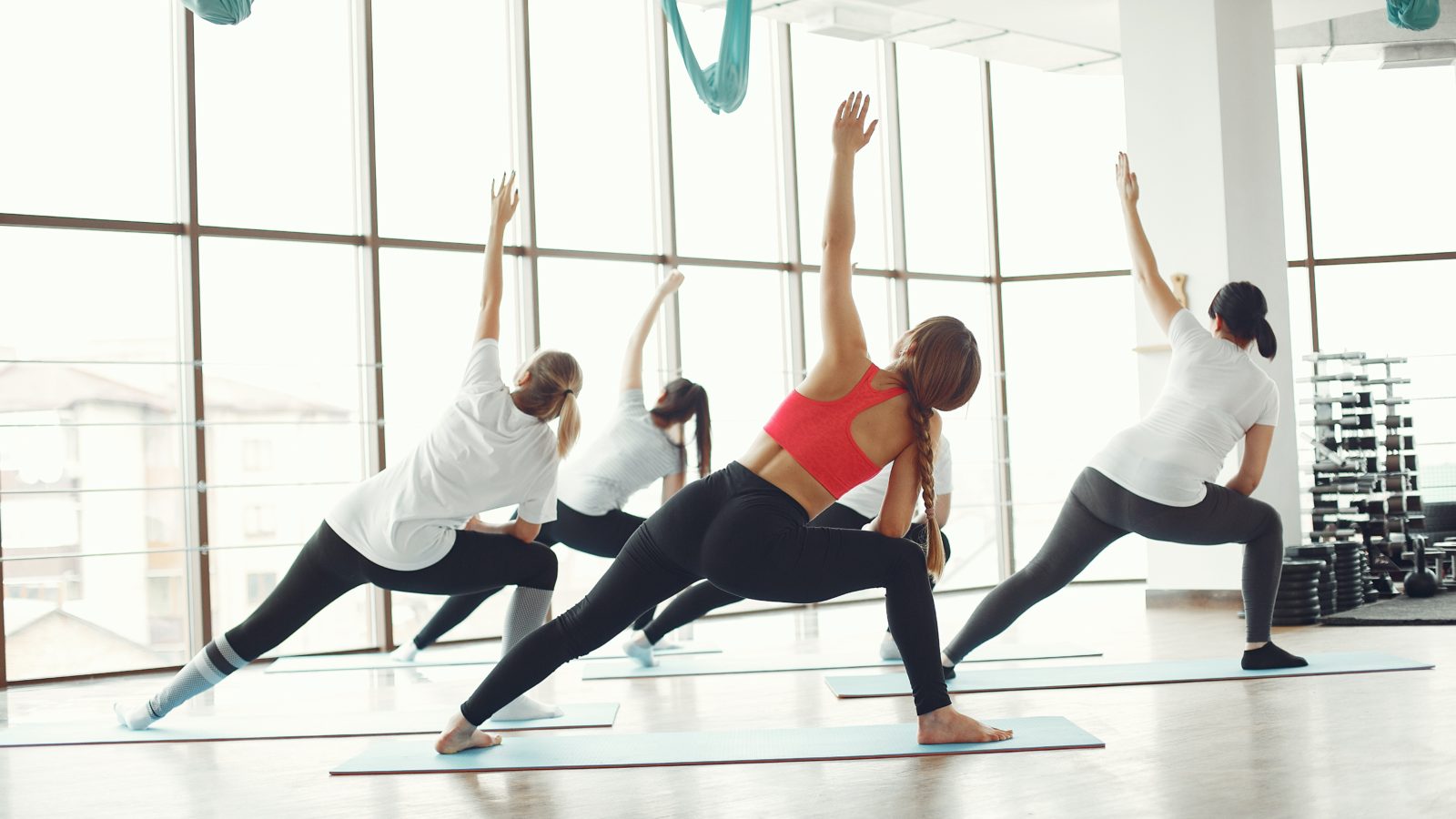Every time I think this conversation has run its course, I hear that a friend or client has been advised to “take it easy” during or after pregnancy, for no other reason than that they are with child or “still healing”. As anyone reading this would know, taking things easy is not possible for most expecting mothers, who have other children, work, or have household obligations that require them to remain active. But what most may not understand are the true benefits of intentional, low-impact exercise both during and after pregnancy; and why “taking it easy” can often do more harm than good.
Let me start from a place of experience. For the first few months of being pregnant with twins, I couldn’t go minutes without feeling like I was on a dangerously small boat amid heavily choppy waters. I could barely make it through getting dressed, let alone think of making it through an exercise class. Ironically, my (brilliant) doctors told me that the best thing to do was to stay active and keep exercising! You can imagine how this amused me.
My pregnancy was classified as high-risk right since we found out I was having twins, so this advice to exercise made everyone around me nervous. Naturally, everyone wanted a second opinion. And then a third, and then a fourth. Not only did every doctor encourage low-impact but moderate-intensity exercise, they all told me it was a necessity. So, I chose a type of exercise which included cardio, strength training and stretching all within one workout, which made things extremely efficient.
Moderate cardio was critical to keeping my circulation healthy, especially through two placentas. Strength and resistance training were crucial to strengthening my abdominal muscles, glutes, pelvic floor, lower back, and support my joints that were all about bear an additional 35 kilos of weight that I ultimately gained by the end of my pregnancy. And the stretching… oh, the stretching. There is science behind that part too, but honestly it just felt so good!
I remember being worried that I would get sick in the middle of a class. Or that I would make a risky pregnancy even riskier. Or that all of those other myths about “bed rest advised during pregnancy” would turn out to be true. But once I did my first group fitness class as a pregnant woman…I felt empowered and invigorated. I wasn’t exhausted. I wasn’t injured. Quite the contrary—I felt stronger. This obviously led me to continue, all the way through 37 weeks of pregnancy, which is when I delivered two baby girls.
I’m convinced that the exercise method that I did was what carried me through a happy and healthy pregnancy, and an even happier postpartum journey. The sense of accomplishment had lingering emotional health benefits, beyond the initial endorphins that one experiences after a workout. And while I certainly wasn’t in a rush, it didn’t hurt that I was able to lose those 35 kilos in 6-8 months! There is nothing better than this sense of empowerment during an utterly vulnerable time in a woman’s life, and I would adamantly recommend low-impact exercise with at least moderate intensity to anyone expecting or in their postnatal stage.
But if you’re not convinced, let’s break down the science: During pregnancy, the body produces a hormone called relaxin which does exactly what it sounds like: It relaxes our pelvic muscles, ligaments and joints to prepare our bodies for childbirth. Since we may feel looser than ever before, we can tend to take workouts and stretching to higher intensities which can result in injury. This is why low-impact, moderate-intensity exercise with stretching is a safe, effective and efficient way to stave off extra prenatal weight, reduce risk of gestational diabetes, and get more sleep before the long era of sleepless nights you have ahead of you as a parent! Relaxin stays in the body long after delivery as well, which is why it’s important to use this same method of exercise during your postnatal recovery process. The other benefits of exercise during this stage include:
1. Boosted Circulation: During pregnancy, your body’s blood volume increases significantly, along with your inclination to stay sedentary. This combination of factors can cause blood to pool in the ankles and lower extremities and cause swelling and discomfort. Targeted isotonic (large and dynamic) lower body movements greatly help increase circulation, specifically pumping blood against gravity and back to your heart to reduce these side effects. Simply walking does not do enough to pump that blood back against gravity, especially when you’re pregnant and your heart needs to work harder—it’s a good start, but it’s not enough.
2. Boosted Strength: This is one of the most misunderstood topics for new mothers. The myths that surround strength training during pregnancy include low birth weight, early delivery, and miscarriage—enough to make you want to just curl up and take a nap. The fact is, strength training with light weights and your own body weight will only benefit you during pregnancy, particularly with respect to pelvic stability, eliminating lower back pain and joint pain, as well as building your upper body muscles required for all the heavy lifting post-delivery. Building your small and big muscle groups in these zones increases blood flow to these areas and strengthens them for delivery, recovery, and surgical recovery should you require a C-section.
3. Improved Posture: With the weight of the baby pulling you forward, pregnant women often develop kyphosis, or rounded shoulders, during pregnancy which starts during pregnancy and is difficult to reverse afterward. The other phenomenon one experiences is lordosis, or sway back. Lordosis happens because the pelvis shifts forward as the baby grows and your spine realigns to your new centre of gravity. It’s important to find a form of exercise that specifically focuses on getting your postural and core muscles trained, to fight the force of gravity and the additional weight of pregnancy. The good news is that a healthy amount of prenatal exercise can avoid excessive re-training these muscles during your postnatal phase.
4. Better Balance: The risk of injury due to falls during pregnancy is real! This is because our centre of gravity changes and throws off our balance completely. While certain low-impact exercises help with circulation, you also want to make sure you choose a form which helps you build those supporting muscles which aid in maintaining balance. The last thing we need to subject ourselves to during pregnancy is an X-ray, MRI, or complications due to a clumsy fall.
5. Relieved Tension: We experience all kinds of aches and pains, even if we have a perfectly healthy pregnancy and are at an optimal prenatal weight the whole way through. An exercise routine which incorporates stretching within it is just that much more efficient and helps you feel functional and healthy during this period of constant physiological change.
6. Psychological Benefits: Maybe I should have led with this point. The global prevalence of postpartum depression has been estimated as 100-150 per 1000 births, with postpartum blues affecting anywhere from 300-750 per 1000 mothers. We know that exercise releases endorphins in the short term, but also boosts serotonin and decreases cortisol which are the hormones involved in depression and anxiety. While exercise is far from a cure for mental illness or postpartum disorders, many practitioners prescribe low-impact and moderate-intensity exercise as part of their treatment programs to boost the right neurochemicals but also to help people feel this sense of empowerment and self-control that I mentioned in my own experience above.
What is often forgotten, is that a lot of these benefits to mothers trickle down to benefit their babies. Increased circulation to the placenta(s) lead to ample nourishment for the baby. Increased strength and improved posture lead to a mother’s ability to handle pregnancy, delivery and early childhood with fewer complications and greater overall ease. And a serotonin and endorphin-infused state of mind can improve maternal/foetal/newborn interactions with each other significantly.
So next time you hear someone is “taking it easy” during pregnancy without a known medical condition (such as a history of pre-term labour, miscarriage, or placental issues that prohibits them from exercising safely), remind them that they could be depriving themselves of something vital to not only themselves but their babies and loved ones—and get them to think again.


